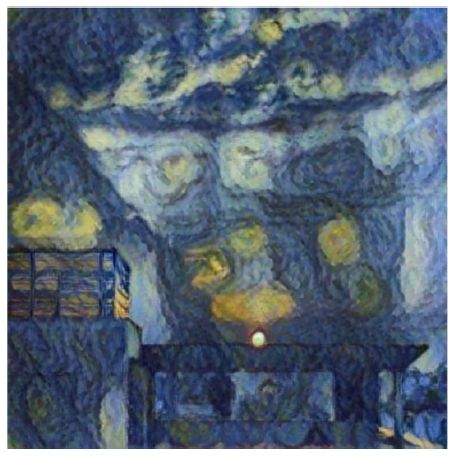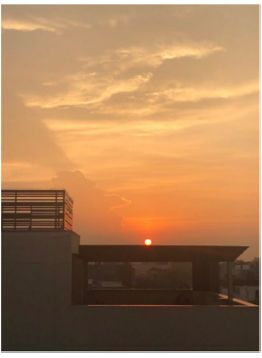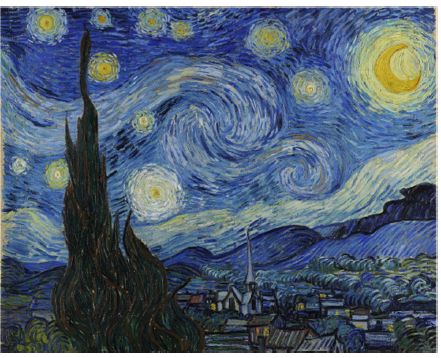In a decision dated 11 December 2023, the Copyright Review Board of the United States Copyright Office affirmed the Office's refusal to register an AI-generated artwork submitted by Ankit Sahni.
Notably, the starting point of the artwork – entitled "SURYAST" – was an original photograph taken by Sahni. Sahni submitted his photograph into "RAGHAV", an artificial intelligence painting application, then submitted a copy of Vincent Van Gogh's "Starry Night" as a "style" to apply to the photograph, then selected the "amount" of style to transfer to the photograph.

The artwork, SURYAST
On 1 December 2021, Sahni filed an application to register SURYAST with the US Copyright Office. The application was rejected by the Office: initially, on 29 June 2022, on the basis that SURYAST lacked the requisite human authorship; and subsequently, on reconsideration, on the basis that it was a derivative work, being a digital adaptation of a photograph, and that the new aspects of the work were generated by RAGHAV and therefore not the result of human creativity or authorship.
On 10 July 2023, Sahni then requested that the Office reconsider a second time its refusal to register the work. Sahni argued that he was responsible for key creative decisions, including selecting the original photograph, selecting Starry Night as the style input and selecting the variable value for the amount of style transfer and that this amounted to sufficient human authorship. Sahni also argued that the work was not a derivative work because the original photograph was "an early stage of what would ultimately become the work."

Mr. Sahni's original photograph

Vincent Van Gogh's The Starry Night
The Copyright Review Board affirmed the Office's decision, refusing Sahni's application to register the work. The Board found that Sahni's original photograph was a separate work of authorship because it was fixed separately from the work. The Board went on to find that the work was "not the product of human authorship because the expressive elements of pictorial authorship were not provided by Mr. Sahni." The Board found that RAGHAV, and not Sahni, was responsible for the presence and arrangement of particular elements in the artwork and the colors applied to them. Sahni's contribution – selecting the base image, the style image and the level of style transfer – constituted the unprotectable idea behind the work: an 'altered version of his photograph in the style of The Starry Night.
The Copyright Review Board decision regarding SURYAST is consistent with prior decisions of the U.S. Copyright Office denying the registerability of copyright in AI-generated artworks.1 Of particular interest as well is footnote three to the decision, which notes that "In 2023 to date, the Copyright Office has granted approximately 100 applications to register works containing AI-generated material, where the AI-generated contributions are disclaimed."
Footnote
1. See Zarya of the Dawn (USCO Final Decision – Feb. 21 2023); Thaler v Perlmutter, Case No. 1: 22-cv-01564 (D.D.C. Aug. 18, 2023); see also the U.S. Copyright Office's Copyright Registration Guidance: Works Containing Material Generated by Artificial Intelligence (issued March 16, 2023) and Notice of Inquiry on Copyright and Artificial Intelligence, published in the Federal Register on August 30, 2023.
The content of this article is intended to provide a general guide to the subject matter. Specialist advice should be sought about your specific circumstances.


